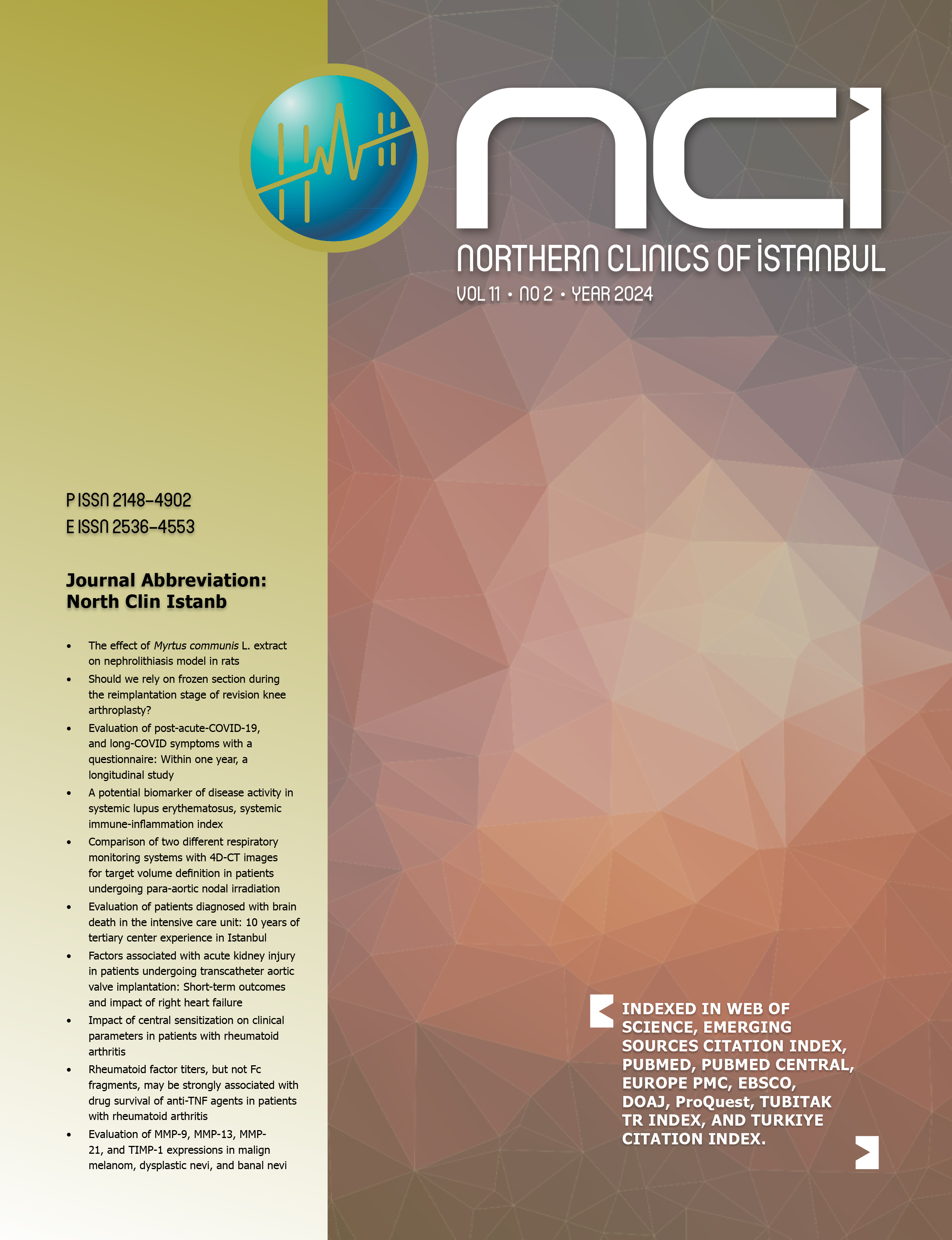Comparison of thyroid surgery experiences of East and West regions in Turkiye
Elbrus Zarbaliyev1, Dauren Sarsenov2, Payam Hacisalihoglu3, Sebahattin Celik41Department of General Surgery, Yeni Yuzyil University, Gaziosmanpasa Hospital, Istanbul, Turkiye2Department of General Surgery, Nazif Bagriacik Kadikoy Hospital, Istanbul, Turkiye
3Department of Pathology, Yeni Yuzyil University, Gaziosmanpasa Hospital, Istanbul, Turkiye
4Department of General Surgery, Van Yuzuncu Yil University, Van, Turkiye
OBJECTIVE: This study aimed to evaluate the differences between the types of thyroidectomy surgeries and surgical treatment approaches according to thyroid pathology results, in Turkiyes two non-endemic regions.
METHODS: Two different centers of the country, which differ in many respects and are non-endemic for thyroidal diseases were included in the study. Data on patients from both sexes, who underwent thyroidectomy in the western (1st center) and the eastern (2nd center) regions between 2011 and 2017 have been reviewed.
RESULTS: Two hundred and forty patients from Istanbul (1st center) and 992 patients from Van (2nd center); a total of 1232 patients were included in the study. According to the pre-operative ultrasonography and laboratory results, toxic nodular goiter and multinodular goiter were the most common diseases in the first and second centers, respectively. There was a significant statistical difference between the radiological diagnostic findings between the two centers (p<0.001). The rate of bilateral total thyroidectomy in the first center was 82.5% (198 patients), whereas this rate was 58.5% (555 patients) in the second center. The type of surgery may change from center to center, (p<0.001). The most common early post-thyroidectomy complication was hypocalcemia in both centers.
CONCLUSION: The results from only two centers from the western and eastern Turkiye show that there is a difference between the thyroidectomy preferences. Future similar national studies will contribute to the provision of a consensus in surgical treatment of thyroid diseases. (NCI-2021-3-14/R1)
Keywords: Regional differences, thyroid diseases; thyroid surgery.
Manuscript Language: English





















